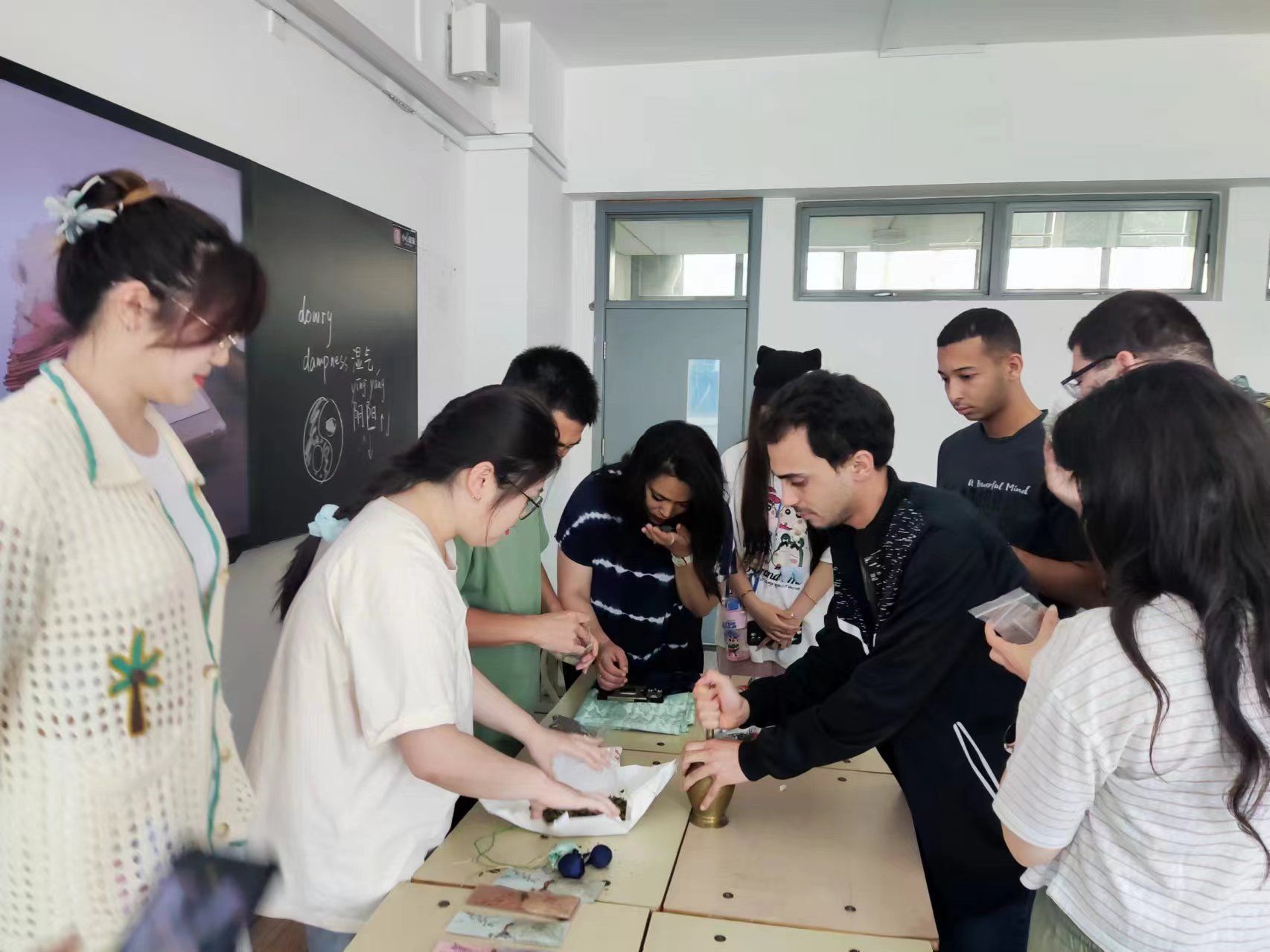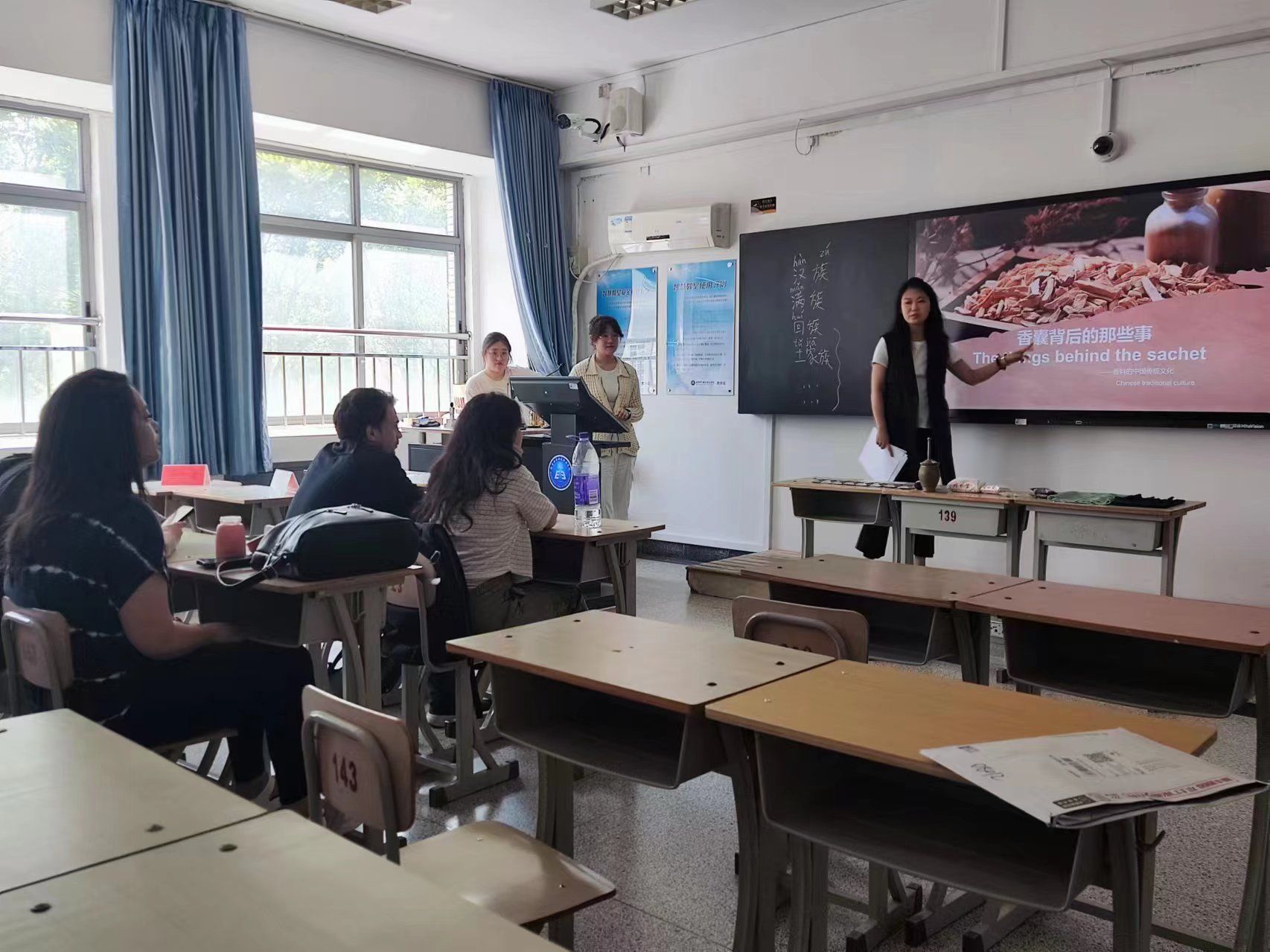In order to enhance the understanding of international students studying in China about traditional Chinese culture, broaden their horizons, and cultivate their practical abilities and cross-cultural communication skills, on May 8th, the School of Economics and Management, in conjunction with the School of Biological Engineering, explained to international students about the traditional folk handicraft of the Tujia ethnic group, Xilankapu, and Chinese medicinal herb sachets. This enabled international students to experience the charm of traditional Chinese culture up close and enriched the forms of international Chinese language education.

Tujia brocade, known as "flower weaving" among the people and also called "Xilankapu", is a unique handicraft passed down from generation to generation by the Tujia people. With its exquisite patterns, rich colors, and unique craftsmanship, it has become an important symbol of Tujia culture.
Wearing sachets is not only a folk custom but also a way to prevent plagues. The commonly used medicinal herbs in sachets are traditional Chinese medicinal herbs with the function of promoting resuscitation by aromatic herbs and contain strong volatile substances. The application of Chinese medicinal sachets in preventing and treating diseases originates from the "clothing therapy" in traditional Chinese medicine. There is a saying among the people that "Wearing a fragrant herb bag, one doesn't need to fear the five pests".

During the activity, the instructors explained to the international students the cultural backgrounds, development histories, and production techniques of Xilankapu and Chinese medicinal sachets. They led the international students to make Chinese medicinal sachets together. Chinese and foreign students jointly experienced the production process of Chinese medicinal sachets, such as selecting medicinal herbs, pounding and grinding with a copper pestle, mixing and sieving, and filling the sachets, and immersively felt the charm of traditional Chinese culture. The international students were deeply impressed by the exquisite craftsmanship of sachet making and the profound cultural heritage it contains.

 Dynamics
Dynamics



 Location:
Location: